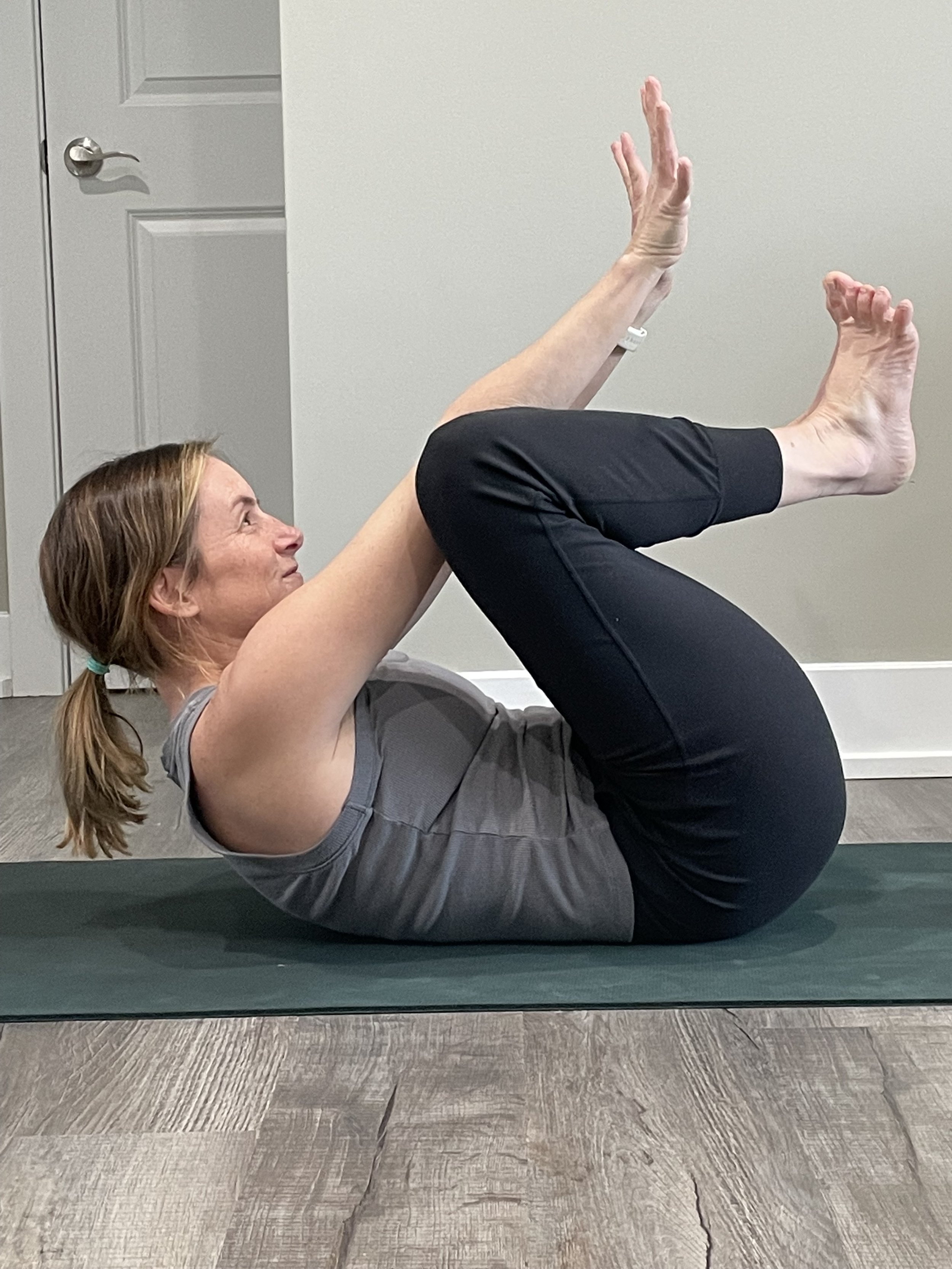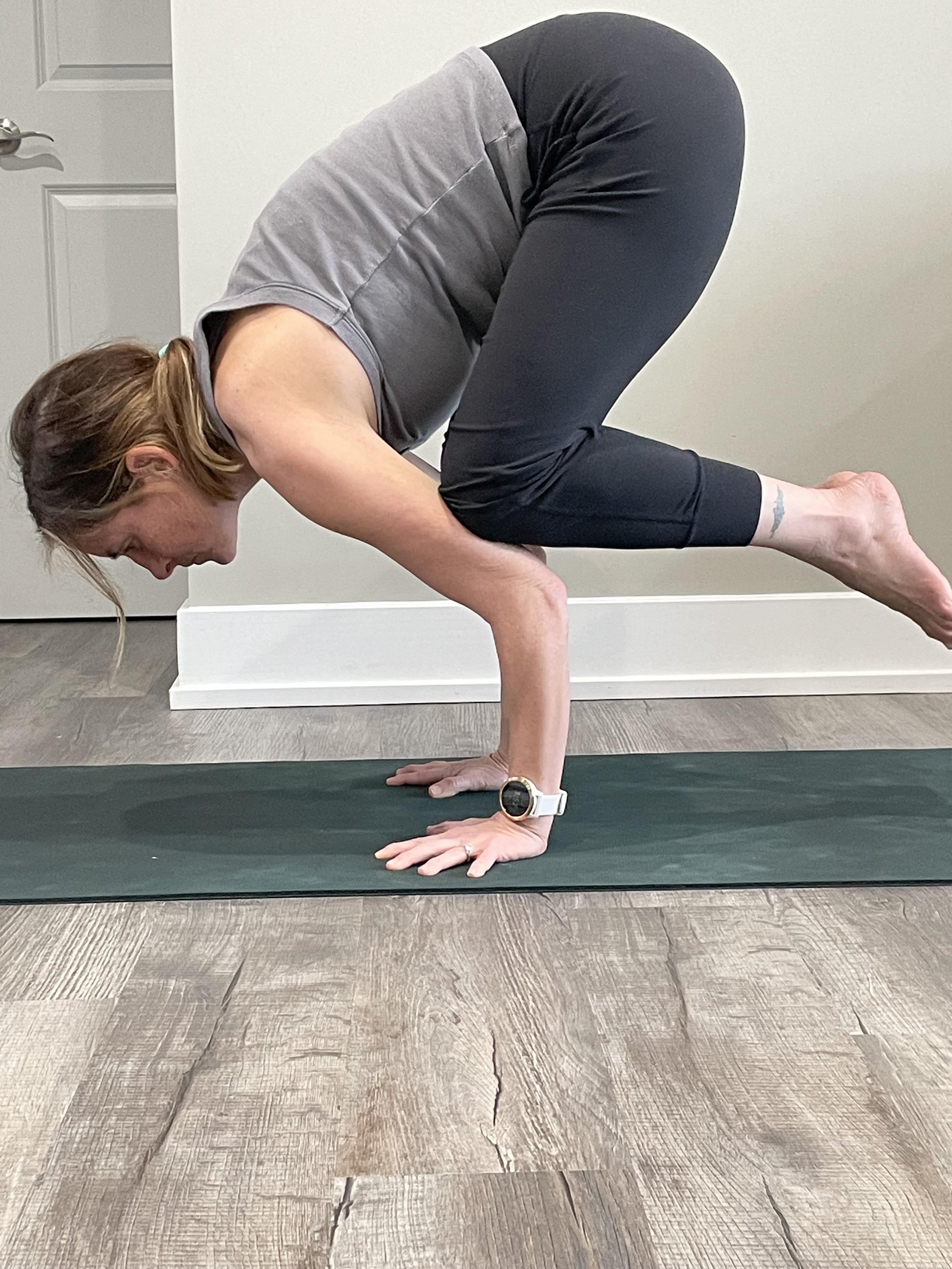I have been teaching yoga for about 9 years. I have had a consistent yoga practice for slightly longer than that, and have incorporated some yoga into my life, off and on, for about twice that long. I attended my first yoga class in my late teens. My mom took me to a class at a community center near where we lived, and it was a gentler flow. Honestly, it was not my cup of tea! I was a pretty serious competitive swimmer, and I liked to work out and work out hard, and the slower, gentler movements and quietness felt like a waste of time for me.
Fast forward a few years, and I started taking some at home private yoga classes, again, with my mom. I enjoyed these a lot more, probably in a large part because I really like the teacher, whose name is Sandy, who we lovingly referred to as “The Yoga Lady”. Sandy incorporated a variety of techniques into her teaching that I hadn’t experienced before, such as candlelight meditation (which we did in the bathroom, as it was the only room we could completely shut out the natural light at my mom’s condo") and breath of fire.
After some time, I began to take some classes at the gym near where I lived in Baltimore. I remember journaling about the way that these classes made me feel calmer and more at peace, but I still didn’t commit to being consistent in my attendance. A couple years later, I decided to enroll in a yoga teacher training. We were required to attend 3 classes per week throughout the 8 month training, and hence the consistency of my practice was found.
At this point in my life, I really craved the power and vinyasa of a practice that incorporated a lot of movement. Although I never have been one to seek out a heated room for my practice (I build a LOT of heat myself!), I enjoyed feeling like I pushed my body physically in the yoga room. It was actually a few years after my initial training that I started to embrace more of the stillness in the practice, and that I started to enjoy holding poses for a little bit longer and finding my breath once I got there.
The past few years I have really begun to pay attention to how I can adjust the practice based on what I need and what is happening outside my life. While I was training for the Boston Marathon in 2021, I noticed that I needed to take gentler, slower practices, and that the power yoga wasn’t really serving me. At the time, I thought, hm, maybe power has played it’s role in my life, and now I need to slow down. Ironically, after running through some foot pain training and racing Boston, I had to take a major step back from running, and I started to see the value again in the more cardiovascular style of power yoga I had enjoyed in the past- because I wasn’t getting that from running. The difference this time around was that I didn’t forget the value I had also found in slower, more introspective practices.
The amazing thing about yoga is that there are so many styles and so many ways to practice. There are days now that I love a solid power flow- but there are also days where I am able to (and need to) find the stillness and meditative components of a yin or restorative practice. And there are many days when I need something in between. All of these styles serve a role for me, and they all have value, equally. In recognizing this, I’ve learned to take a step back from labeling a “right” or “wrong” or “better” type of yoga. And I also recognize that just because I move away from a component for a period of time, doesn’t mean I won’t return to that component in the future.
In this recognition, I feel that maybe I have been able to practice some of the deeper levels of yoga- the non-attachment and non-judgement, the letting go of the ego. This recognition and open mindedness that the evolution of my own postural yoga practice has taught me has given me great steps towards the ultimate goal of the practice, which is liberation, freedom from suffering, and knowing that each part of the path is part of the path.
Wherever you are on your yoga path, I hope that it is serving you in some way, whether it is power yoga, gentle yoga, yin yoga, or a non-postural path. But observe your own evolution, and allow the space for it to grow and change. And let me know how it goes!







